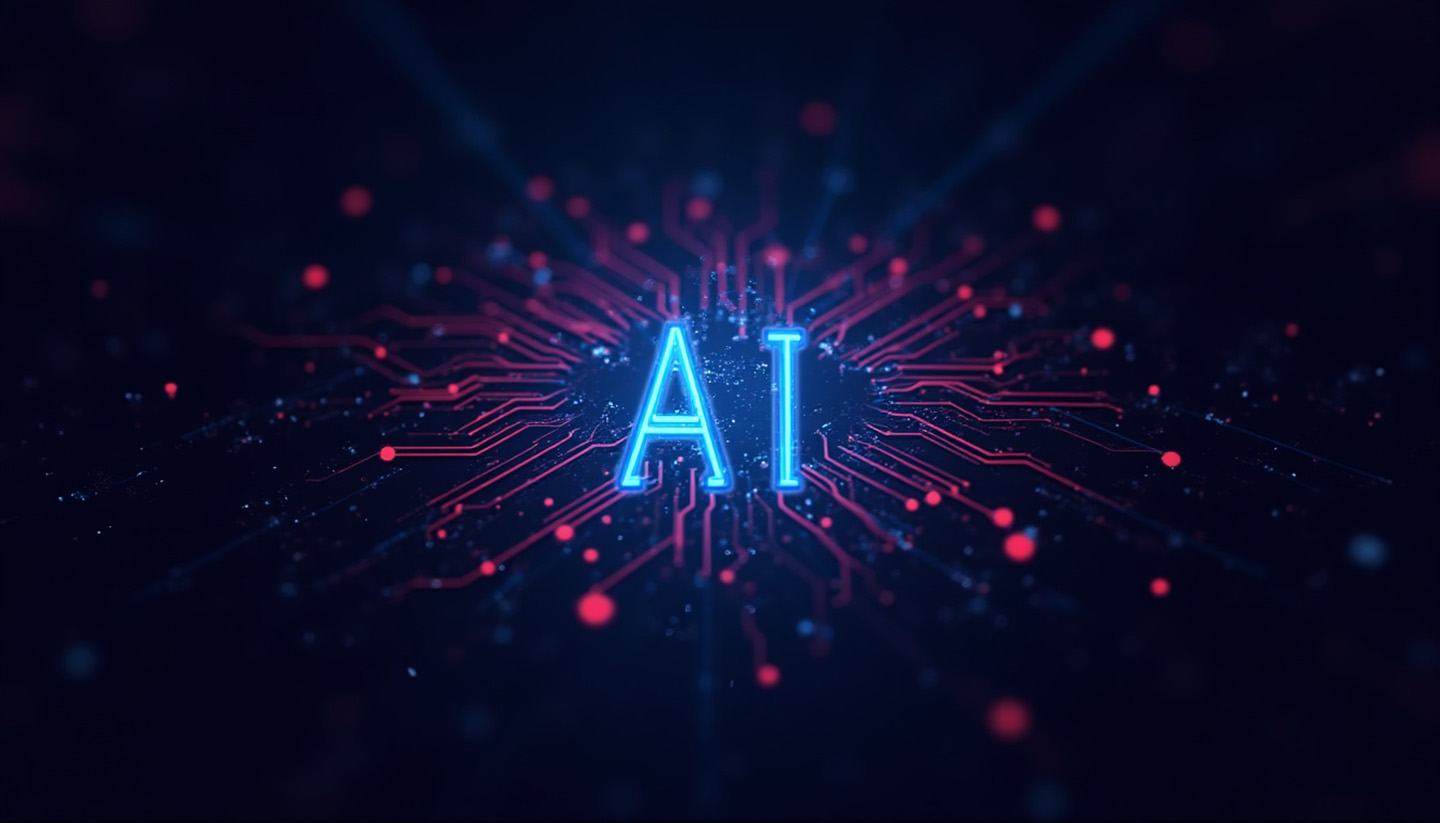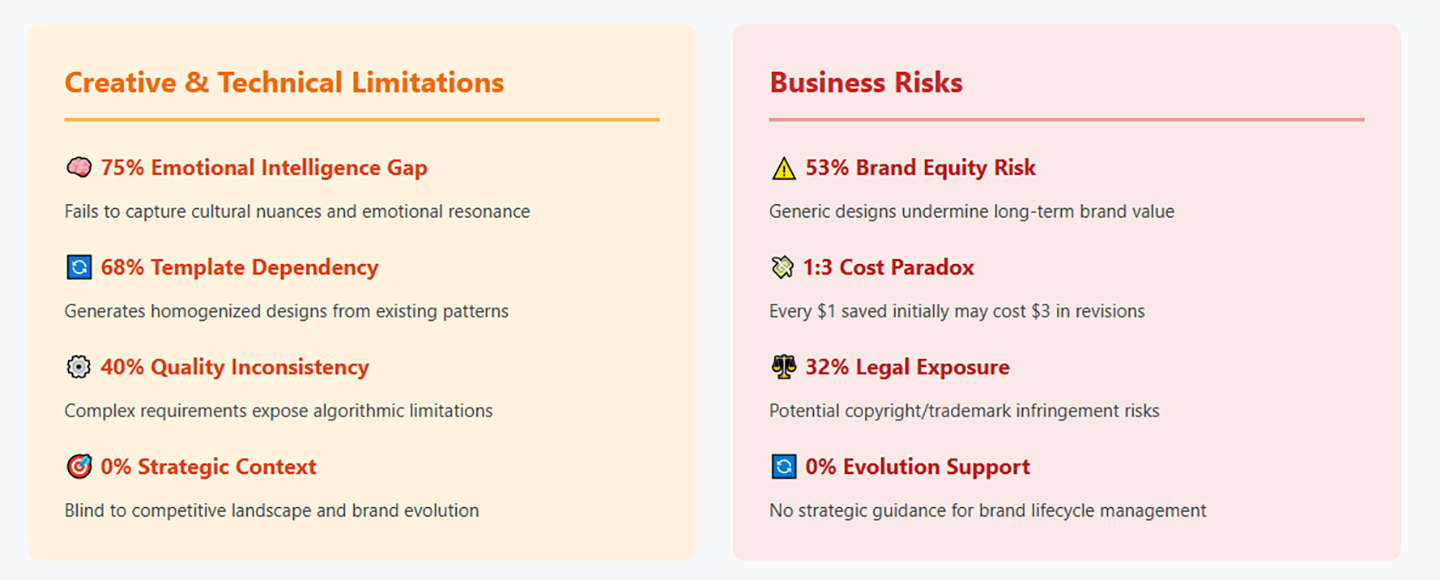The landscape of logo design has undergone a seismic shift with the emergence of AI Logo Generators. These sophisticated tools are democratizing brand identity creation, enabling businesses of all sizes to craft professional logos in minutes rather than weeks. But what exactly are these AI-powered platforms capable of, and how are they reshaping the creative industry?
Understanding AI Logo Generator Technology
Core Functionality and User Experience
AI Logo Generators leverage advanced machine learning algorithms and neural networks to automate the logo design process. These platforms typically analyze user inputs such as business name, industry type, style preferences, and color schemes to generate multiple design variations instantly.
The workflow is remarkably straightforward: users enter their brand details, select design preferences, and receive customizable logo options within minutes. Tools like Looka create professional-looking logos in just 5 minutes, while platforms such as Wix Logo Maker and Canva offer AI-assisted design with extensive template libraries.
The technology behind these generators relies on vast datasets of existing designs, analyzing millions of logos to identify successful patterns, color psychology principles, and typography trends. This data-driven approach enables AI to create logos that align with industry standards and audience expectations.
Market Growth and Adoption
The AI Logo Generator market is experiencing explosive growth, projected to reach USD 2,063.1 million by 2033, expanding from USD 333.2 million in 2023 at a remarkable 20% CAGR. This growth is driven by increasing demand for cost-effective branding solutions, particularly among small businesses and startups.
Current statistics reveal that 75% of small businesses are utilizing AI tools, with 69% reporting business growth as a result. More specifically, 40% of small businesses now use AI-powered logo design tools, indicating widespread adoption across the SME sector.

Core Features and Capabilities
Design Generation and Customization
Modern AI Logo Generators offer sophisticated customization options that rival traditional design processes. Leading platforms provide:
- Real-time logo generation with multiple style variations
Comprehensive color palette selection based on brand psychology
- Typography customization with industry-specific font recommendations
- Icon and symbol libraries with thousands of design elements
- Layout optimization for various applications and platforms
Logomaster AI offers high-resolution files (~4096px) suitable for all purposes, while Brandmark provides unlimited edits even after purchase. These platforms ensure logos remain scalable from favicon to billboard applications without losing clarity.
File Formats and Technical Specifications
Professional AI Logo Generators deliver comprehensive file packages including:
- High-resolution PNG and JPG files for web and print
- Vector formats (SVG, EPS, PDF) for infinite scalability
- Transparent background options for versatile applications
- Multiple logo variations (horizontal, vertical, monochrome)
- Brand kit assets including business cards and social media graphics
Real-World Applications and Case Studies
Small Business Success Stories
Research indicates that 68% of small businesses report cost savings when using AI logo generators compared to hiring designers, with 75% expressing satisfaction with the quality of AI-generated designs. Additionally, 80% of businesses using AI logos noticed improved brand recognition within six months.
A comprehensive study by the Small Business & Entrepreneurship Council found that 75% of small businesses utilize AI tools, resulting in $273.5 billion in annual savings. The design and branding sector represents a significant portion of this efficiency gain.
Industry Implementation Examples
Coca-Cola's AI-Enhanced Visual Identity: In 2024, Coca-Cola partnered with OpenAI to create hyper-personalized logo variations for different markets, resulting in an 18% increase in global brand engagement.
Spotify's Dynamic Branding: The platform uses AI to generate personalized playlist covers based on user listening habits, reinforcing brand identity through individualized experiences.
Cost-Effectiveness Analysis
Traditional logo design costs range from $300-$1,500 for freelancers to $2,500-$10,000+ for agencies. In contrast, AI-generated logos cost between $10-$100 for professional results, representing savings of up to 95% compared to traditional methods.
The time savings are equally dramatic: while traditional logo design can take weeks, AI generators produce professional results in minutes, enabling rapid iteration and testing.
Competitive Analysis: AI vs. Human Designers
AI Logo Generator Advantages
Speed and Efficiency: AI generators can produce multiple logo variations in seconds, dramatically reducing time-to-market for new businesses.
Cost-Effectiveness: At a fraction of traditional design costs, AI tools make professional branding accessible to startups and small businesses.
Data-Driven Design: AI analyzes successful design patterns, color psychology, and industry trends to create logos optimized for audience appeal.
Scalability: AI-generated logos automatically adapt to various formats and applications, ensuring consistent brand representation across platforms.
Accessibility: Non-designers can create professional logos without specialized knowledge or skills.
Human Designer Strengths
Creative Storytelling: Human designers excel at translating abstract brand concepts into meaningful visual narratives that resonate emotionally with audiences.
Strategic Brand Thinking: Professional designers consider competitive landscape, target audience psychology, and long-term brand evolution.
Cultural Sensitivity: Human designers understand cultural nuances, avoiding potentially offensive or inappropriate design choices.
Custom Solutions: Designers can create truly unique concepts that break conventional patterns, whereas AI relies on existing data and templates.
Ongoing Partnership: Human designers offer consultation, iteration, and long-term brand development support.
Performance Comparison
Research from the University of Maryland reveals that AI tools cannibalize lower-tier design tasks, forcing human designers to focus on more complex, strategic work. However, successful designers adapt quickly, leveraging AI as a creative tool while emphasizing uniquely human capabilities.
The World Economic Forum identifies graphic design as the 11th fastest declining job due to AI advancement, yet simultaneously creates new opportunities in AI-assisted design and human-AI collaboration.
Technical Limitations and Challenges
Design Quality Issues
AI logo generators face several technical constraints that impact output quality:
Text Generation Problems: AI systems struggle with typography integration, often producing incoherent text or failing to generate custom lettering effectively. This limitation particularly affects wordmark and typographic logo styles.
Style Transfer Artifacts: AI algorithms can introduce visual flaws including warped elements, inconsistent styling, and resolution degradation, especially problematic for minimalist designs requiring precision.
Template Dependency: Most AI generators rely on finite databases of pre-existing design elements, potentially resulting in similar logos across different users.
Context Understanding: AI lacks deep comprehension of brand values, cultural nuances, and industry-specific requirements, leading to generic designs that may not resonate with target audiences.
Customization Limitations
Limited Flexibility: AI platforms typically offer restricted customization options compared to professional design software, constraining fine-tuning capabilities.
Editing Constraints: Once generated, many AI logos cannot be significantly modified without starting over, lacking the iterative refinement possible with human designers.
Format Limitations: Some platforms don't provide editable source files, preventing future modifications or adaptations.
Technical Accuracy Issues
Pattern Recognition Failures: AI systems may misinterpret design instructions, struggle with specific elements like hands or umbrellas, and fail to maintain consistency across variations.
Quality Degradation: Automated processes can reduce image quality, introduce compression artifacts, and compromise scalability for professional applications.
Industry-Specific Challenges: AI tools may struggle with specialized industries requiring technical precision, medical compliance, or regulatory adherence.

Ethical Considerations and Legal Implications
Intellectual Property Concerns
Copyright Uncertainty: A critical issue facing AI-generated logos is copyright ownership ambiguity. The US Copyright Office has established that purely AI-generated content cannot be copyrighted, raising questions about asset protection.
Training Data Issues: AI platforms train on massive datasets that may include copyrighted material without proper licensing, potentially exposing users to infringement claims. The Getty Images lawsuit against Stability AI exemplifies these concerns.
Trademark Implications: While AI-generated logos can be trademarked if they meet distinctiveness and commercial use requirements, ownership rights depend heavily on platform terms of service. Many AI tools retain partial rights or impose licensing limitations that complicate exclusive ownership.
Algorithmic Bias and Discrimination
Design Bias: AI systems can perpetuate existing biases present in training data, potentially creating logos that reflect historical prejudices or cultural stereotypes. Studies show that algorithmic bias affects up to 85% of AI systems, including creative tools.
Representation Issues: AI training datasets often lack diversity, leading to designs that may not represent all communities equally or may inadvertently exclude certain demographics.
Cultural Insensitivity: AI lacks cultural awareness, potentially generating designs that are inappropriate or offensive in specific cultural contexts.
Professional Impact
Designer Displacement: The World Economic Forum predicts graphic design jobs will decline significantly due to AI advancement, though new roles in AI-assisted design are emerging. 68% of small businesses now prefer AI tools over hiring designers, indicating substantial industry disruption.
Skill Devaluation: The commoditization of design through AI tools risks undervaluing professional expertise and reducing design to transactional exchanges rather than strategic partnerships.
Quality Standardization: Widespread AI adoption may lead to homogenized design aesthetics, reducing creative diversity and innovation in the industry.
Industry Impact and Future Predictions
Small Business Transformation
AI Logo Generators are democratizing brand identity creation for small businesses. Survey data reveals 75% of small businesses now use AI tools, with 93% agreeing that AI offers cost-effective solutions improving profitability. The $273.5 billion in annual savings generated by AI adoption includes significant contributions from design automation.
Small businesses particularly benefit from AI's accessibility, with 40% now using AI-powered design tools to create professional branding at a fraction of traditional costs. This shift enables resource-constrained startups to compete visually with larger corporations.
Design Industry Evolution
The design industry is experiencing a paradigm shift toward AI-assisted workflows. Rather than wholesale replacement, successful designers are adapting quickly to incorporate AI tools while emphasizing uniquely human capabilities like strategic thinking and emotional storytelling.
80% of logo design processes are expected to involve AI assistance by 2025, indicating widespread integration rather than replacement. New job categories are emerging, including AI-assisted design, prompt engineering, and human-AI collaboration specialists.
Market Projections
Long-term Growth: The AI Logo Generator market is projected to reach $1.35 billion by 2029 at a 22.7% CAGR, driven by increasing customization demands and user-friendly interfaces.
Technology Advancement: Future developments include mobile-friendly platforms, 3D logo design capabilities, and blockchain-based IP protection for AI-generated assets.
Integration Trends: AI logo tools are increasingly integrating with broader business ecosystems, including website builders, marketing platforms, and e-commerce solutions.
Competitive Landscape Shifts
Enterprise Adoption: While initially focused on small businesses, AI logo tools are expanding into enterprise markets with custom AI training and brand guideline automation.
Platform Consolidation: Major design platforms like Adobe, Canva, and Figma are integrating AI capabilities, potentially consolidating the market around established players.
Specialization Emergence: Niche AI tools focusing on specific industries or design styles are emerging to address limitations of general-purpose generators.
Critical Analysis: Limitations and Drawbacks
Creative and Strategic Shortcomings
Lack of Emotional Intelligence: AI logo generators fundamentally lack the emotional intelligence and cultural sensitivity that human designers bring to brand identity creation. They cannot understand the subtle psychological connections between visual elements and audience emotions, often producing technically competent but emotionally flat designs.
Generic Design Patterns: Despite claims of uniqueness, AI tools rely heavily on pattern recognition from existing designs, leading to homogenized aesthetics across industries. This template dependency means multiple businesses may unknowingly use similar visual identities, undermining brand differentiation.
Context Blindness: AI systems cannot grasp broader business context, competitive landscape, or strategic brand positioning. They lack understanding of how logos fit into comprehensive brand strategies or evolve with business growth.
Technical and Quality Issues
Inconsistent Output Quality: While AI can produce visually appealing logos quickly, quality varies significantly based on input parameters and algorithmic limitations. Complex design requirements often exceed AI capabilities, resulting in subpar outputs.
Limited Problem-Solving: When AI encounters design challenges—such as balancing multiple visual elements or resolving spacing issues—it lacks the creative problem-solving ability that human designers employ intuitively.
Scalability Concerns: Although marketed as infinitely scalable, AI-generated logos may not translate effectively across all applications, particularly specialized uses like embroidery, signage, or responsive digital environments.
Business Risk Factors
Brand Investment Vulnerability: Businesses building their identity around AI-generated logos face potential long-term brand equity risks if designs prove generic, legally problematic, or culturally inappropriate over time.
Lack of Strategic Partnership: Unlike working with professional designers, AI tools provide no ongoing consultation, brand evolution support, or strategic guidance as businesses grow and change.
Quality-Price Misalignment: While AI tools appear cost-effective initially, businesses may face hidden costs including legal issues, rebranding needs, or professional refinement requirements.

Solutions and Recommendations
For Business Decision-Makers
Hybrid Approach Strategy: Consider using AI logo generators for initial ideation and concept exploration, then engaging professional designers for refinement and strategic development. This approach maximizes cost-efficiency while ensuring quality outcomes.
Due Diligence Framework: Before adopting AI-generated logos, carefully review platform terms of service, understand intellectual property rights, and conduct trademark searches to avoid legal complications.
Quality Standards Implementation: Establish clear criteria for logo evaluation, including scalability testing, cultural sensitivity review, and competitive differentiation analysis.
For Design Professionals
Skill Evolution Strategy: Embrace AI as a collaborative tool rather than competition by developing expertise in AI-assisted design, prompt engineering, and human-AI workflow optimization.
Value Proposition Refinement: Emphasize uniquely human capabilities including strategic thinking, cultural sensitivity, and emotional intelligence that AI cannot replicate.
Technology Integration: Proactively incorporate AI tools into design workflows for ideation, iteration, and productivity enhancement while maintaining creative control.
For Industry Development
Ethical Standards Creation: The design industry should establish ethical guidelines for AI use, addressing bias mitigation, cultural sensitivity, and professional responsibility.
Education and Training: Design education programs must evolve to include AI literacy, prompt engineering, and human-AI collaboration skills to prepare future professionals.
Legal Framework Development: Industry organizations should advocate for clear intellectual property regulations governing AI-generated creative assets.
FAQs
Q: Can I trademark an AI-generated logo?
A: Yes, AI-generated logos can be trademarked if they meet standard requirements for distinctiveness and commercial use. However, copyright protection is limited since the US Copyright Office requires human authorship for copyright eligibility. Carefully review your AI platform's terms of service to ensure you have proper ownership rights.
Q: What are the main technical limitations of AI logo generators?
A: Key limitations include text generation problems, inconsistent quality output, template dependency, and limited customization flexibility. AI systems also struggle with context understanding, cultural nuances, and complex design problem-solving that human designers handle intuitively.
Q: Are there legal risks associated with using AI-generated logos?
A: Yes, potential risks include copyright infringement from training data, unclear ownership rights, and trademark conflicts. Many AI platforms retain partial rights to generated content, and training datasets may include copyrighted material without proper licensing. Conduct thorough due diligence before implementing AI-generated branding assets.
Q: Will AI logo generators replace human designers completely?
A: Unlikely. While AI is automating lower-tier design tasks, successful designers are adapting by emphasizing strategic thinking, emotional intelligence, and cultural sensitivity. The industry is evolving toward human-AI collaboration rather than wholesale replacement, with new roles emerging in AI-assisted design.
Conclusion
The AI Logo Generator revolution represents a fundamental transformation in brand identity creation, democratizing professional design capabilities while simultaneously challenging traditional creative paradigms. These sophisticated tools offer unprecedented accessibility, enabling small businesses and startups to create polished visual identities at a fraction of conventional costs.
The advantages are compelling: AI generators deliver professional results in minutes, cost 90% less than traditional methods, and leverage data-driven insights to create audience-optimized designs. The market's explosive growth—projected to reach $2.06 billion by 2033—reflects widespread adoption and genuine business value.
However, critical limitations persist. AI tools lack the emotional intelligence, strategic thinking, and cultural sensitivity that define exceptional brand design. Issues around copyright ownership, algorithmic bias, and creative homogenization present significant challenges for businesses seeking truly distinctive identities.
The future lies not in replacement but in collaboration. As the design industry evolves, successful professionals are embracing AI as a powerful creative tool while emphasizing uniquely human capabilities. Businesses benefit most from hybrid approaches that leverage AI's efficiency while ensuring strategic depth and cultural resonance through human expertise.
For organizations considering AI logo generators, the technology represents a valuable tool for initial exploration and cost-effective solutions, but should be approached with clear understanding of both capabilities and limitations. As this technology continues advancing, the brands that thrive will be those that thoughtfully balance artificial efficiency with authentic human creativity.
 Submit Your AI Tool For FREE!Showcase Your Innovation To Thousands Of AI Enthusiasts!
Submit Your AI Tool For FREE!Showcase Your Innovation To Thousands Of AI Enthusiasts! Submit Your AI Tool For FREE!Showcase Your Innovation To Thousands Of AI Enthusiasts!
Submit Your AI Tool For FREE!Showcase Your Innovation To Thousands Of AI Enthusiasts! Submit Your AI Tool For FREE!Showcase Your Innovation To Thousands Of AI Enthusiasts!
Submit Your AI Tool For FREE!Showcase Your Innovation To Thousands Of AI Enthusiasts! Submit Your AI Tool For FREE!Showcase Your Innovation To Thousands Of AI Enthusiasts!
Submit Your AI Tool For FREE!Showcase Your Innovation To Thousands Of AI Enthusiasts! Submit Your AI Tool For FREE!Showcase Your Innovation To Thousands Of AI Enthusiasts!
Submit Your AI Tool For FREE!Showcase Your Innovation To Thousands Of AI Enthusiasts!






No comments yet. Be the first to comment!